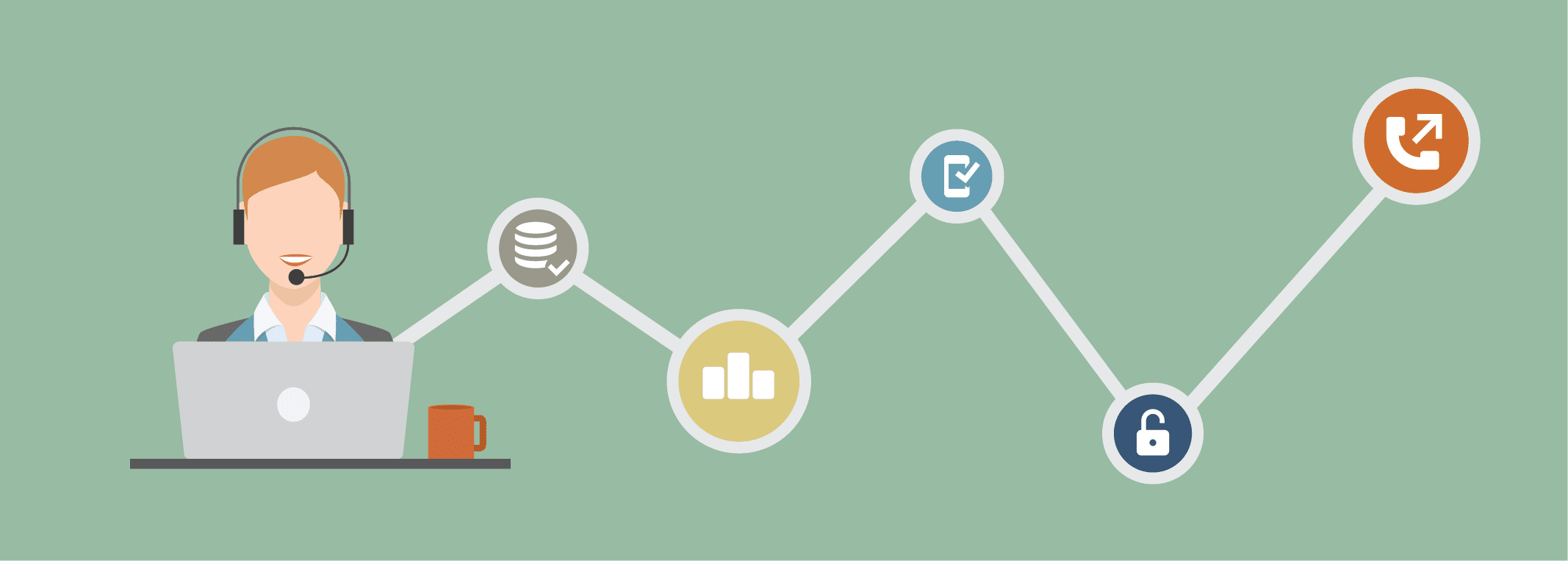How Predictive Dialers Pay for Themselves
Manual dialing used to be the standard. Salespeople, managers, and call center reps would break out their list of phone numbers and dial them one digit at a time, wait for someone to answer, and move on to the next phone number. This process would be repeated ad infinitum. That all changed when predictive dialers hit the scene.
Now a computer could automatically call leads for them. The predictive dialer may dial multiple numbers at once, but it only connects to an agent once a human being is on the line. This dramatically boosted agent performance and productivity. It also saved call centers a lot of money.
Of course, manual dialers are good for maintaining TCPA compliance. And they’re well-suited for small businesses and startups.
But if call centers have a large customer base and they’re able to maintain TCPA compliance without manual dialers, they should be using predictive dialers.
3 Benefits of Predictive Dialers
The ultimate benefit of predictive dialers is it helps agents serve customers better, which is serious business for your bottom-line. U.S. companies are losing billions every year due to negative service experiences that lead to cancellations, defections, churn – you name it.
The flipside is also true:
The Executive Vice President of American Express’ servicing organization, Raymond Joabar, had this to say about customer service affecting businesses’ bottom line: “Seven in 10 U.S. consumers say they’ve spent more money to do business with a company that delivers great service.”
That number is based on a report conducted by American Express.
If businesses hope to capitalize on the big benefits of serving their customers, then predictive dialers can help them do it. Below, we give you 3 reasons why predictive dialers are so powerful.
1. Connects to CRM
Predictive dialers connect with most CRMs, integrating in-depth knowledge about the customer into every call.
Call center agents can see past orders, previous conversations, special notes, lead status in the sales funnel, etc.
When agents are speaking with customers, they can see all of this information in real-time. This can dramatically improve the conversation and provide agents with just the right knowledge to deliver exceptional service.
And once one agent is finished with a call, any information jotted down about the conversation and customer is recorded so the next time that person calls, any agent who answers will see all the relevant information they need to help them even better and faster the next time.
2. Skills-Based Routing Is a Perfect Fit for Predictive Dialing
Agents in call centers have varying skills.
Some are excellent closers while others are expert listeners. Not every agent will be good at everything. Which is precisely why customers shouldn’t always be handed off to the first available agent.
What the customer wants, the customer’s history with the company and the emotional state of the customer should all factor into which agent talks to them.
This is why skills-based routing is an ideal way to transfer calls to agents. Agents with the appropriate skills to handle certain customers will speak with them first. This helps increase first-call resolution, which helps increase customer satisfaction, which helps ensure that customers will stick around long-term. And combined with predictive dialing’s time savings, this means more customers get exactly what they want when they are reached.
3. Boost Agent Productivity – More Detail about Predictive Dialing
Predictive dialers are a surefire way to increase agent productivity. Here’s why:
Manual dialing takes a lot of time. Let’s say 20 seconds per call dialed. That time factors in pressing the phone numbers, waiting for the phone to connect, listening to it ring, and either being answered by someone or playing a prerecorded voicemail message.
Then, the agent has to record that the call was unanswered in their notes so they can call it again some other time. That’s another wasted 10 seconds.
This seems minor for one call, but if you consider that call agents are making hundreds of calls a day, this time adds up to a substantial amount of lost time and productivity better spent actually speaking to people.
Predictive dialing, on the other hand, dials numbers almost instantaneously and listens for a human to answer or a machine. If a human answers, the call is connected to a live agent automatically. If a machine picks it up, the predictive dialer automatically hangs up and dials the next number.
Plus, predictive dialers keep dialing even while agents are on the phone so the moment an agent finishes with one customer, they can switch to the next one seamlessly. Increased call volume means increased productivity.
How to Find out If a Call Center Is Getting the Maximum ROI from Their Dialer
Having learned a bit about the cost- and time savings that come from an enterprise level calling platform might have you questioning the value of your current system. See if a move is right for you: we detail the pros and cons of a cloud-based dialer vs an on-premise dialer in our free whitepaper you can download here. Get it today to find out how to get the maximum ROI from the right platform.
